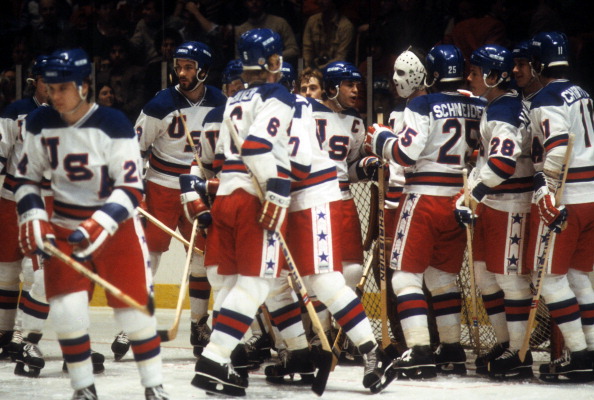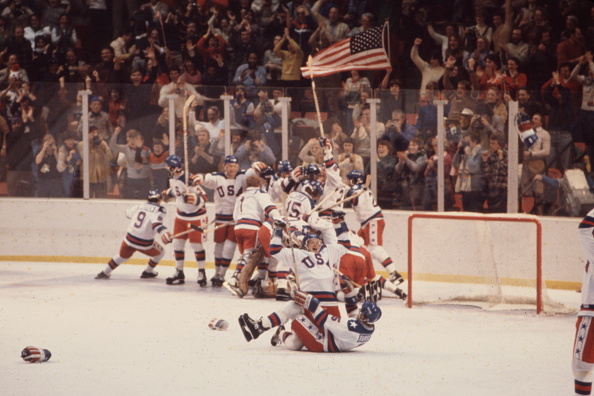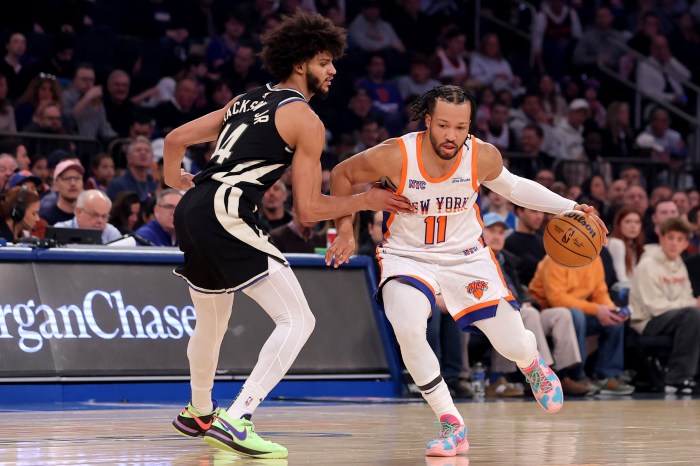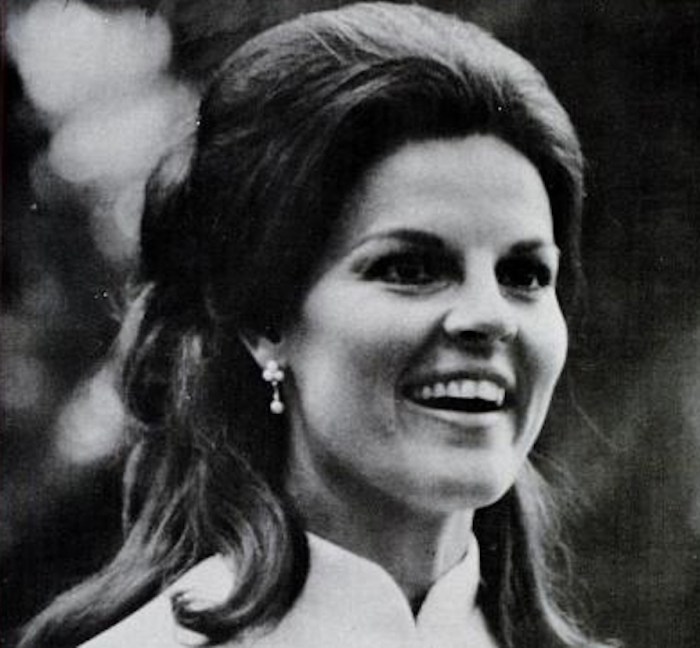We see the term “David vs. Goliath” thrown around far too often in sports.
Whether its lazy narratives from national sports networks or a lack of ingenuity, an inability to properly describe upsets in the professional sporting world — especially in North America — has almost cheapened the phrase.
An upset is one thing.
That’s the Jets beating the Colts in Super Bowl III, the Giants defeating the Patriots in Super Bowl XLII, the Pirates downing the Yankees in the 1960 World Series.
Those are teams who were not favored to win but were still comprised of established professionals and sometimes, stars.
The Jets had Joe Namath and Don Maynard — both Hall of Famers. The Giants had Eli Manning, Plaxico Burress, and Michael Strahan. The Pirates had Roberto Clemente and Bill Mazeroski.
Upsets? Yes.
David downing Goliath with a slingshot? No.
Tabbing something along those lines is far more rare in sports and Saturday marks the 40th anniversary of its greatest example.
Feb. 22, 1980, will forever be remembered as the day the United States hockey team downed the Soviet Union 4-3 in the semifinals of that year’s Winter Olympics in Lake Placid, NY in what was — and likely forever will be — the greatest upset in sports history and a rare victory at the time for Americans during an icy time of the Cold War.
Goliath
The Soviet Union — a collection of professional hockey players in the Red Army — built a juggernaut behind the Iron Curtain beginning in the 1960s.
They won four-consecutive gold medals at the Olympics from 1964-1976, losing just two games during that stretch while outscoring their opponents 273-61 in 33 games. That was an average of 8.27 goals per game at the Olympics.
Within their ranks was some of the greatest players the game of hockey has ever seen. But the Cold War and the Soviet regime ensured that the world — mainly North America — never got an opportunity to see them play in the NHL.
It was through that loophole that the Soviets were able to keep the core of their team together for more than a decade as professional players were not allowed to compete at the Olympics.
This was a team described as “state-sponsored amateurs” who represented the Red Army despite training and playing schedules like a professional team with players of all ages.
Several of those players were amongst the best in the world.
To this day, you still can’t have a conversation about the greatest goaltenders ever without including Vladislav Tretiak.
In 14 seasons as the Soviet netminder in major international competitions, he won 80 of 96 games while posting a .909 save percentage and 2.11 goals-against average.
He was as close to unbeatable during his first two Olympics in 1972 and 1975, going 8-0-1 with a .936 save percentage.
This during an age when goaltender equipment was far inferior and smaller than the pads worn by today’s netminders.
Tretiak was one of three Soviet players featured on the 1980 Olympic team would be inducted into the Hockey Hall of Fame despite not playing a single game for a North American team.
The others — Slava Fetisov and Sergei Makarov — went on to play in the NHL after the fall of the Soviet Union.
Center and captain Boris Mikhailov was one of the top players on the planet and the greatest Soviet skater ever.
In Soviet league play, he amassed 652 points (428 goals, 224 assists) in just 572 games.
Of the Soviet Union’s 20-man Olympic roster in 1980, 11 of those players have been enshrined in the International Ice Hockey Federation (IIHF) Hall of Fame.
As a tune-up before the 1980 games, they took on a team of NHL All-Stars that featured 20 Hall of Famers in what was dubbed the Challenge Cup and beat them two out of three games — the final, a 6-0 beatdown at Madison Square Garden in 1979.
They returned to New York City just days before the start of the 1980 Games and annihilated the US Olympic Team 10-3.
David

After winning gold in Squaw Valley at the 1960 Games, the United States hockey team medaled once in the next four Olympic Games — a silver in 1972.
Like most of the world, they were light-years behind the Soviets as they were forced to trot out true amateurs on the ice.
Their main source of talent came from the collegiate ranks put together by Herb Brooks, who won three national championships in six years at the University of Minnesota.
While the Soviets had a decade-plus of cohesion, Brooks was forced to assemble a team of 20 in just months as he held team tryouts in the summer of 1979.
Of the 20 selected, only Buzz Schneider had prior Olympic experience with five points in six games at the 1976 Games. Thirteen of the 20 came from either Brooks’ school in Minnesota or Boston University — two bitter rivals on the collegiate stage.
While talented amateurs, these weren’t necessarily “can’t-miss” NHL prospects.
Of the 20 Americans, 12 went on to play for the NHL. However, five of those players accounted for 85% of their combined 6,035 games of NHL experience.
But as the last man cut by the 1960 gold-medal winning team just before the Olympics, Brooks defied convention and sometimes, logic, putting together a group of players that be believed would be able to handle his workload and expectations.
A grueling 61-game exhibition schedule followed as the US played a combination of national sides, collegiate teams, minor-leaguers, and NHL squads with mixed results despite a 41-17-3 record.
The United States made easy work of the minor-league teams from the Central Hockey League, going 14-1-3, but they were beaten handily by the Minnesota North Stars, St. Louis Blues, Atlanta Flames, and Washington Capitals.
They also took just two of six games from the Canadian national team and tied the lowly Norwegians — resulting in the now-famous postgame workouts in which Brooks ran the team ragged with skating drills nicknamed “Herbies.”
Any tangible hopes for success at the Olympics flew out the window just days before the start of the tournament though when the Americans were ransacked by the Soviets which almost led to the benching of goaltender Jim Craig.
The lead-up to the Miracle
As expected, the Soviet Union barreled their way through the field during group play, winning all five of their games by a combined score of 51-11. That included a 16-0 thrashing of Japan and a 17-4 beatdown of the Netherlands.
As for the Americans, their Olympic hopes were on the brink during their opener, trailing Sweden 2-1 in the final minute before Bill Baker’s slapper in the final minutes salvaged a point.
They responded by beating a Czechoslovakia team regarded as the second-best in the world 7-3 before wins against Norway, Romania and West Germany punched their ticket to the semifinals and a date with the Soviets.
More than a game
“I’m sure there are a lot of people who do not know the difference between a blue line and a clothesline. It’s irrelevant. It doesn’t matter. Because what we have at hand, the rarest of sporting events. An event that needs no buildup, no superfluous adjectives. In a political or nationalistic sense, this game is being viewed with varying perspectives. But manifestly it is a hockey game. The United States and the Soviet Union on a sheet of ice in Lake Placid, New York.” – Al Michaels
Hockey never provided the same kind of impact as the other three major sports in North America.
But leading up to the United States’ clash with the Soviet Union on Feb. 22, a hockey game was so much more than just that.
America was in the midst of the Cold War with the Soviet Union with national pride at an all-time low.
The Soviet Union’s invasion of Afghanistan prompted President Jimmy Carter to announce that the United States would boycott the 1980 Summer Olympics in Moscow.
That came on the heels of a summer that included a major recession, a gas shortage, and the Iran hostage crisis that saw 52 American diplomats and citizens overtaken by revolutionists at the US Embassy in Tehran on Nov. 7, 1979.
“Do You Believe in Miracles?”
https://www.youtube.com/watch?v=hbYDY7uHk4k&t=323s
“Great moments are born from great opportunity, and that’s what you have here tonight, boys. That’s what you’ve earned here tonight. One game; if we played them ten times, they might win nine. But not this game, not tonight. Tonight, we skate with them. Tonight we stay with them, and we shut them down because we can. Tonight, we are the greatest hockey team in the world. You were born to be hockey players—every one of you, and you were meant to be here tonight. This is your time. Their time is done. It’s over. I’m sick and tired of hearing about what a great hockey team the Soviets have. Screw ’em. This is your time. Now go out there and take it!” -Herb Brooks
Despite Brooks’ rousing words that were dramatized in the motion picture “Miracle” and an electric pro-American atmosphere at the Olympiad Center in Lake Placid, an all-too-familiar feeling of dread swept over American hopes in the game’s early portions.
The Soviets dominated most of the play, finding a breakthrough nine minutes in when Vladimir Krutov deflected a shot from the point under Craig.
Almost out of nothing, Schneider pulled the United States level less than five minutes later when his long-range slapper from the left point beat Tretriak’s glove — a softie by the Soviet goalie’s standards.
Makarov found a quick reply for the Red Army just 3:30 later when he roofed a wrister off a scramble in front of Craig, but American resolve found an equalizer at the death of the first and sent the first fault lines cracking through the Soviet system.
In the final seconds of the period, Dave Christian slapped a puck from beyond center ice that gave Tretiak trouble. While he managed to kick it away, it fell right to stick of Mark Johnson, who deked around Tretiak and finished as the first expired.
It was the final shot Tretiak would see that day as he was pulled by coach Viktor Tikhonov for Vladimir Myshkin. He made just six save on eight shots.
The change in goal seemed to re-spark the Soviets as they snagged the only goal of the second period. Just 2:18 into the frame, Aleksandr Maltsev was sprung free on a breakaway on the power play where he got Craig to commit before finishing over the goalie.
It was the final blemish of a banner day for Craig, as he entered the period of his life down a goal.
Johnson scored his second of the game 8:39 into the third as an American power play was expiring. A falling Dave Silk found an on-rushing Johnson, who flipped his close-range shot past Myshkin, paving the way for one of the most famous goals in hockey history.
With momentum firmly on America’s side, Mike Eruzione’s iconic wrister just 1:21 after Johnson’s goal put the USA up for good.
“I lost the puck. I couldn’t see it,” he wrote in his book ‘The Making of a Miracle’. “What I saw was the net. [It] suddenly bulged out, punched back by something … Then I saw the fans behind the goal leaping up out of their seats, hands in the air, and I knew.”
With 10 minutes to go, Craig and the United States’ defense absorbed the late Soviet barrage to complete the miracle and send the Olympiad Center into bedlam while the rest of the country had to wait a few hours to see history made on tape delay.
“I looked at the scoreboard, and one thought ran through my mind,” Eruzione wrote. “I can’t believe it, I said to myself even as I hugged one teammate and the next and the next. I can’t believe we beat the Russians.”
That’s a true upset story. That’s David slaying Goliath.
And 40 years later, it’s still one of the greatest moments in sports providing goosebumps and misty eyes for those who catch a replay or the famous film.



































